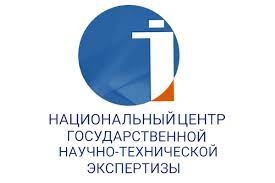THE “CREATE/DESTROY” DICHOTOMY: EXPLORING COGNITIVE AND STRUCTURAL-SEMANTIC ASPECTS
https://doi.org/10.55491/2411-6076-2024-4-40-50
Abstract
The relevance of comparative studies of structurally heterogeneous languages has not diminished recently in science. One of the problems attracting such scientific attention is the “creation/destruction” dichotomy in English and Russian. Researchers in this field have prioritised the study of the “creation/destruction” dichotomy in terms of a deep understanding of human cognition and behaviour. This dichotomy includes cognitive and structural-semantic aspects, each of which has a great capacity to convey information from a cognitive perspective. Cognitively, it includes processes such as imagination, creativity, cognitive biases, and mechanisms such as memory, attention, and perception. Structurally and semantically, it takes on a conceptual character that defines the essence and application of structures‘ of “creation/destruction”. The article analyses empirical material in two languages in order to explain the essence of the “creation/destruction” dichotomy found in English and Russian, and describes the relative meaning. The study will consider linguistic, cognitive and structural aspects of the mentioned structure and review the works of researchers and investigators in this field. The paper also discusses the cognitive and structural-semantic aspects of the dichotomy “creation/destruction” and their use in an educational setting. Empirical studies have shown that cooperative learning, reflection, imaginative play, and addressing cognitive biases have a positive impact on the educational experience. Critical thinking, problem-solving skills, creativity, and metacognition have been found to be enhanced in students by incorporating these outcomes into the teaching and learning process.
About the Authors
P. BalkhimbekovaKazakhstan
Perizat Balkhimbekova, Corresponding author, Doctor of Philosophy (PhD)
Astana
A. Kurmanayeva
Akmaral Kurmanayeva, Doctor of Philosophy (PhD)
Almaty
References
1. Abaeva, M., Dmitrjuk, N., Ufimceva, N. (2024) Issledovatelskij potencial associativnoi leksikografii: perspektivy diahronicheskih issledovanij v Kazahstane [Abayeva, M., Dmitryuk, N., Ufimtseva, N. (2024) The Research potential of associative lexicography: prospects of diachronic research in Kazakhstan]. Tiltanym, №3. P. 72-84. (in Russian)
2. Apresjan, Y.D. (1995) Izbrannye trudy. T.II. Integralnoe opisanie jazyka i sistemnaja leksikografija. Moskva: School ‘Languages of Russian Culture’, 767 s. [Apresyan, Y.D. (1995) Selected works. T.II. Integral description of language and system lexicography. Moscow: School ‘Languages of Russian Culture’, 767 p.] (in Russian)
3. Askerova, M.J. (2020) Categories of Nominative Semasiology: Word, Meaning, Sign. In D.K. Batayev (Ed.), Social and Cultural Transformations in the Context of Modern Globalism» Dedicated to the 80th Anniversary of Turkayev Hassan Vakhitovich, Vol 92. European Proceedings of Social and Behavioral Sciences. P. 105-111.
4. Bally, S. (1965) General linguistics and questions of the French language. https://www.booksite.ru/fulltext/sharl/ (Date of address 16.10.2023)
5. Bar, M., Biederman, I., (1998) Subliminal visual priming. Psychol. Sci., 9(6). P. 464-468.
6. Carrick, M. (2020) Imagination at the heart of cognitive development. Retrieved from https://thespoke.earlychildhoodaustralia.org.au/imagination-heart-cognitive-development/
7. Dolan, R.J. (2002) Emotion, cognition, and behavior. Science, 298 (5596). P. 1191-1194.
8. Kanaar, N. (2019) Creation, Destruction, and the Tension Between: A Cautionary Note on Individuation in Tristan Egolf, W. G. Sebald, and Niall Williams. Master Thesis. 945. Retrieved from https://scholarworks.gvsu.edu/theses/945
9. Katsnelson, S.D. (2023) Typology of language and speech thinking. http://superlinguist.ru/index.php?option=com_content&id=494:2010-11-08-08-10-37-32&catid=17:2009-11-23-13-41-08&Itemid=17 (Date of address 16.10.2023)
10. Lohse, M. (2019) Emotional priming depends on the degree of conscious experience. Neuropsychologia, Volume 128. P. 96-102.
11. Marchetti, G. (2014) Attention and working memory: two basic mechanisms for constructing temporal experiences. Front Psychol. 5: 880. Retrieved from https://www.ncbi.nlm.nih.gov/pmc/articles/PMC4132481
12. Milkowski, M. (2017) The False Dichotomy Between Causal Realization and Semantic Computation. Hybris. 38 ISSN: 1689-4286. P. 1-21. Retrieved from https://philarchive.org/archive/MIKTFD
13. Nikitin, M.V. (2007) Kurs lingvisticheskoj semantiki. SPb.: RGPU im.Gercena, 819 s. [Nikitin, M.V. (2007) Course of linguistic semantics. SPb.: Herzen Russian State Pedagogical University, 819 p.] (in Russian)
14. Overgaard, M., Sandberg, K. (2012) Kinds of access: different methods for report reveal different kinds of metacognitive access. Philos. Trans. R. Soc. Lond. B Biol. Sci., 367 (1594). P. 1287-1296.
15. Percov, N.V. (2015) Lingvistika. Pojetika. Tekstologija. Moskva: Jazyki slavjanskoj kul'tury, 321 s. [Pertsov, N.V. (2015) Linguistics. Poetics. Textology. Moscow: Languages of Slavic Culture, 321 p.] (in Russian)
16. Pimenova, M.V. (2001) Koncepty vnutrennego mira: Dis. ... doktora filologicheskih nauk. Moskva, 494 s. [Pimenova, M.V. (2001) Concepts of the inner world: Cand. ... doctor of philological sciences. Мoscow, 494 p.] (in Russian)
17. Potebnja, A.A. (1993) Mysl' i jazyk. Kiev: SINTO, 283 s. [Potebnya, A.A. (1993) Thought and Language. Kiev: SINTO, 283 p.] (in Russian)
18. Ramsoy, T.Z., Overgaard, M. (2004) Introspection and subliminal perception. Phenomenol. Cogn. Sci., 3(1). P. 1-23.
19. Sandberg, K. et al. (2010) Measuring consciousness: is one measure better than the other? Conscious. Cogn., 19(4). P. 1069-1078.
20. Shepel, Y., Panchenko, O., Zirka, V., Fedina, O. (2021) The structural-semantic field of dichotomy “one’s own – alien” in the English language world picture. Linguistics and Culture Review, 5(S4). P. 84-101. Sshherba, L.V. (1974) Jazykovaja sistema i rechevaja dejatel'nost'. Leningrad: Nauka, 428 s. [Shcherba, L.V. (1974) Language system and speech activity. Leningrad: Nauka, 428 p.] (in Russian)
21. Shmelev, D.N. (2007) Sovremennyj russkij jazyk. Leksika. Moskva: Nauka, 335 s. [Shmelev, D.N. (2007) Modern Russian language. Lexicon. Moscow: Nauka, 335 p.] (in Russian)
22. Shmelev, V.M. (2000) Teoreticheskie osnovy perevodcheskoj dejatel'nosti. Moskva, 210 s. [Shmelev, V.M. (2000) Theoretical bases of translation activity. Мoscow, 210 p.] (in Russian)
23. Vinogradov, V.V. (1977) Osnovnye tipy leksicheskih znachenij slova. Izbrannye trudy. Leksikologija i leksikografija. Moskva, S. 162-189 [Vinogradov, V.V. (1977) Basic types of lexical meanings of the word. Selected works. Lexicology and lexicography. Мoscow, P. 162-189.] (in Russian)
24. Wierzchoń et al. (2014) Different subjective awareness measures demonstrate the influence of visual identification on perceptual awareness ratings. Conscious. Cogn., 27. P. 109-120.
25. Windey, B., Vermeiren, A., Atas, A., Cleeremans, A. (2014) The graded and dichotomous nature of visual awareness. Philos.Trans. R. Soc. B, 369 (1641).
Review
For citations:
Balkhimbekova P., Kurmanayeva A. THE “CREATE/DESTROY” DICHOTOMY: EXPLORING COGNITIVE AND STRUCTURAL-SEMANTIC ASPECTS. Tiltanym. 2024;96(4):40-50. https://doi.org/10.55491/2411-6076-2024-4-40-50

















